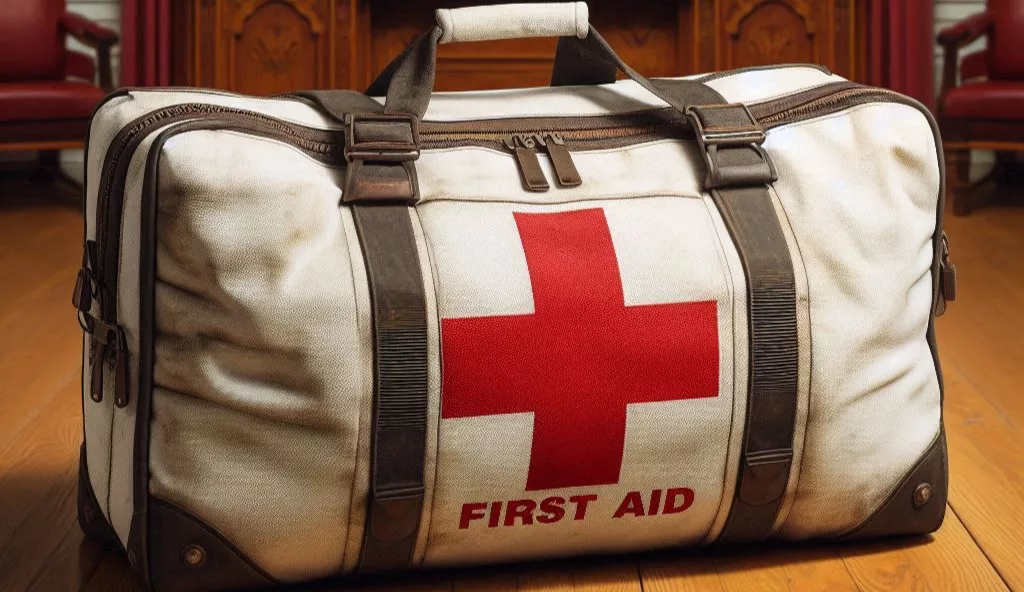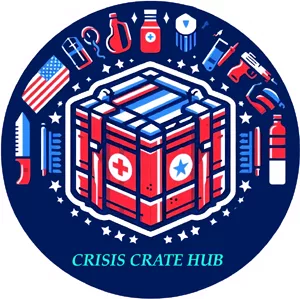Table of Contents

Every first-aid kit starts with the basics. These aren’t just simple items thrown together—they’re the building blocks of good preparedness. Think of it like having a solid foundation before creating any structure. So, what’s crucial to include?
Adhesive bandages are your go-to for minor cuts and scrapes. You’d be surprised how often you’ll need these little lifesavers when kids are running around, or even when you’re tackling everyday tasks. They come in all shapes and sizes, so having a variety gives you flexibility to cover wound surfaces depending on their size.
Next on the list, gauze pads and rolls, paired with adhesive tape, are vital. Also: while most bandages will stick to themselves, it wouldn’t hurt to make sure your kit also includes at least 4 bandage clips in case you need them. These help handle larger wounds that need more attention. It’s about absorbing blood and protecting the injury from further damage, reducing the risk of infection. Antiseptic wipes or solutions like hydrogen peroxide and a tube of anti-bacterial ointment are key for cleaning the area around wounds and preventing, “the bad guys”, namely bacteria, from getting a free ride
Don’t underestimate the power of having scissors and tweezers. Scissors help to cut tape and bandages to size, meanwhile, tweezers are essential for removing tiny foreign objects like splinters or ticks. It’s these small items that make a big difference. Also, a compact first-aid manual or basic instruction guide or even a basic first-aid app, if your phone is operable, can be a lifesaver in critical moments if you’re unsure about what to do. Having the know-how at your fingertips is a big confidence booster.
Let’s not forget the personal touches—like including any personal medications or items specifically needed by your household. Also don’t forget to consider the specific types of possible emergencies you and your loved ones could be potentially exposed to depending on the area you will be in, not just at home, but places such as on vacation, hiking, or camping as well. Tailoring your kit to meet the unique needs of those you’re caring for makes it far more effective. Stocking up on these basics provides peace of mind, ensuring you’re ready to tackle the minor mishaps life might throw your way.
Beyond Basics: Enhancing Your Kit for Burns and Fire Emergencies
Once you’ve got the basics down, it’s time to think about what you might need if faced with more serious situations like burns or fire-related incidents. These emergencies require specific gear to manage effectively.
When it comes to burns, whether from heat, electricity, or chemicals, having burn sprays or gels in your kit can be a game-changer. These products help cool the burn quickly and prevent further damage to the skin. It’s all about immediate relief and aiding the healing process.
Fire-resistant blankets are another crucial addition, especially if you live in a wildfire-prone area or work with open flames regularly. These aren’t just any blankets; they’re designed to smother flames and protect from excessive heat. Having one handy could protect you and your loved ones in dire moments.
Don’t overlook the importance of protective gear like masks and eye protection. In smoky or fire-heavy environments, face masks can help filtrate harmful particles from smoke, while protective eyewear shields your eyes from heat and debris. These tools also come in handy during emergency evacuations, offering an added layer of safety.
For dealing with smoke inhalation or thermal injuries, knowing how to use these items properly is key. An emergency app that guides you through these steps could also prove invaluable. Quick action alongside proper tool use ensures you can respond effectively while waiting for professional help.
These items are crucial in diversifying your first-aid kit beyond the basics. It’s about readiness for more severe circumstances, giving you the tools to handle the unexpected with confidence.
Guarding Against Invisible Threats: Pandemics and Preparing for Chemical Burns
Addressing invisible threats demands attention to detail and specialized equipment. In scenarios involving chemical exposure, the right protective gear isn’t just an add-on—it’s essential. Face masks should top your list, specifically ones that filter out chemical particles and protect the respiratory system.
Eye protection is equally critical when dealing with chemicals. Goggles designed to fit snugly prevent dangerous substances from coming into contact with your eyes. It sounds obvious, but that layer of protection can save you from severe damage during chemical accidents.
A comprehensive first-aid kit for pandemic times also demands adaptation as we have recently witnessed with the Covid-19 Outbreak. Stocking up on surgical masks, or even N95s, along with hand sanitizers caters to hygiene and prevention in the face of viral threats. Antibacterial wipes also enhance your defense against contagions.
Understanding how to use this protective gear is crucial. Training on the application and removal of PPE (Personal Protective Equipment) reduces the risk of cross-contamination. It’s one thing to have the tools; it’s another to use them effectively. A quick online tutorial or a session with a healthcare professional or even a First-Aid Class can make a huge difference.
Tailoring your kit for these invisible threats ensures you’re equipped not just to respond but also to prevent escalation. Preparing thoughtfully provides a strong defense against some of the most challenging emergencies you might face.
Assembling a Well-Rounded Emergency-Ready Kit: Efficient Packing and Maintenance
Creating an emergency-ready first-aid kit goes beyond just having the right items. It’s about how you organize and maintain it to ensure it’s ready whenever you need it. Start by grouping items based on categories—bandages, medications, tools like scissors and tweezers. This organization helps you find what you need quickly when time is of the essence.
Keep your medical gloves, masks, and any protective gear easily accessible at the top of your kit. You wouldn’t want to dig around in search of these during a chemical spill or smoke situation. The layout of your kit can make all the difference in high-pressure moments.
Regular maintenance of the kit is crucial. Set a routine check—every few months to ensure items are within their expiry dates and in good condition. It’s not just about replacing what’s used; consider how the contents might have been exposed to elements that could degrade them.
Consider having a simple inventory list right in your kit. This list reminds you of what’s inside, what needs renewing, and what might be missing. Plus, keeping emergency contact info in an easily visible place inside the kit can prove vital if you’re ever incapacitated.
Tailoring your kit and staying on top of its maintenance reflects your commitment to preparedness and may mean all the difference in a serious crisis until help can arrive. It’s not just about having tools but ensuring they’re primed for use the moment you need them.

I think it’s fate that I never really thought about essential and enhanced preparedness in terms of first aid practices until coming across this article. Thank you for giving your educational insights! In a situation where you were about to give someone CPR due to being unable to find a nearby defibrillator, is it necessary to use any first aid tools or is it optional as long as you are skilled in giving CPR? What sort of first aid tools could you use?
Hello Beta35,
Thank You for your comments! I’m glad you came across my article. I think when most of us do normal things as simple as going on a vacation, or a camping trip, or even a nice long road trip, we have a tendency to forget that anywhere we go, and at anytime, an extreme emergency can come along out of nowhere.
As to your question of the CPR:
It’s obviously better if you know CPR. It would be helpful to have a chest compression aid, also known as a CPR device, that can help maintain consistent chest compressions, reducing fatigue for the rescuer and improving the effectiveness of the CPR. It’s especially helpful for people who are not trained in CPR, or who may have difficulty providing effective compressions, however, it’s not recommended that such a device be used except by a trained medical person and they are very expensive at that. Also: I have recently added a downloadable PDF for a well-rounded emergency kit in the case you might like to take a look at it!
Thank You
This article really hit home for me. I will say, it’s a thoughtful reminder that being truly prepared isn’t just about having the right supplies, but also about knowing how to use them and keeping them ready for when you need them most. The way it breaks down the essentials, from adhesive bandages to more specialized items like burn gels and fire-resistant blankets, makes you realize that every little detail can make a big difference during an emergency. Frankly speaking, It’s inspiring to see how organizing and maintaining your kit, along with a little foresight about potential scenarios, can transform a basic collection of items into a robust safety net. Reading it, I couldn’t help but reflect on the value of preparedness—not only for protecting ourselves but also for giving us peace of mind in uncertain times.
Great job!
Hi Dan!
Thank You for your comments!
It’s not just piece of mind for ourselves, but anyone else we may encounter as we camp, or travel abroad, as I think it’s one of those items that most people think they may never need. It either gets left behind entirely or it turns out since we might never pay too much attention to it, that it may well be “bare bones” as far as proper First-Aid goes even for the smallest of cuts. I have also recently included in this article a downloadable PDF for anyone who might want to just have “a list” of what a well-rounded Extreme Emergency First-Aid Kit might include. It’ not all inclusive, but like I said, It’s a pretty well rounded list.
Thank Again! Have A Great Day!